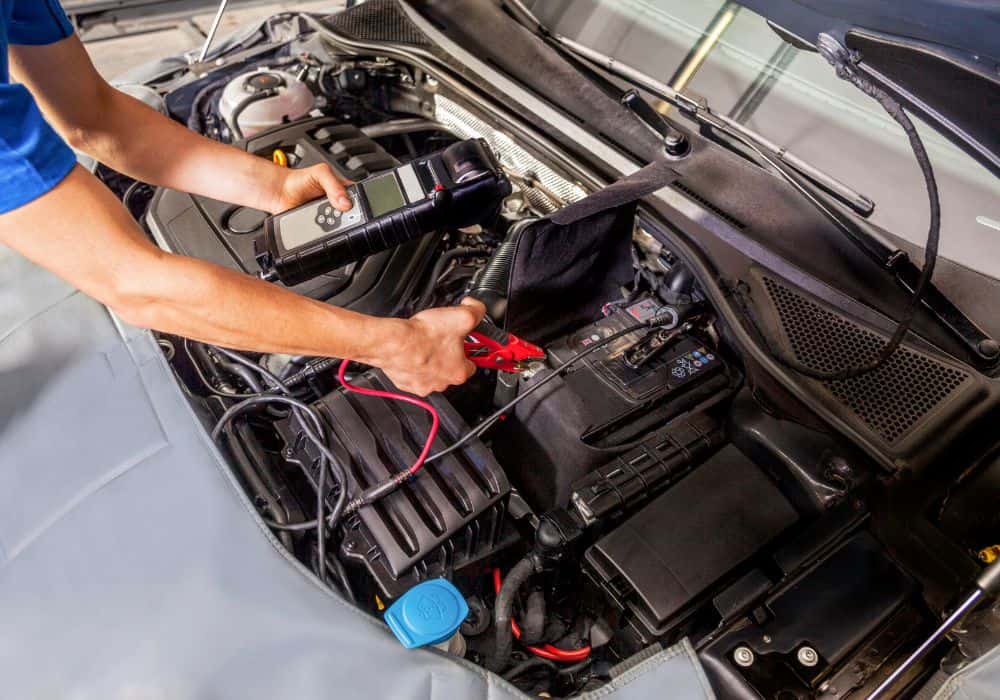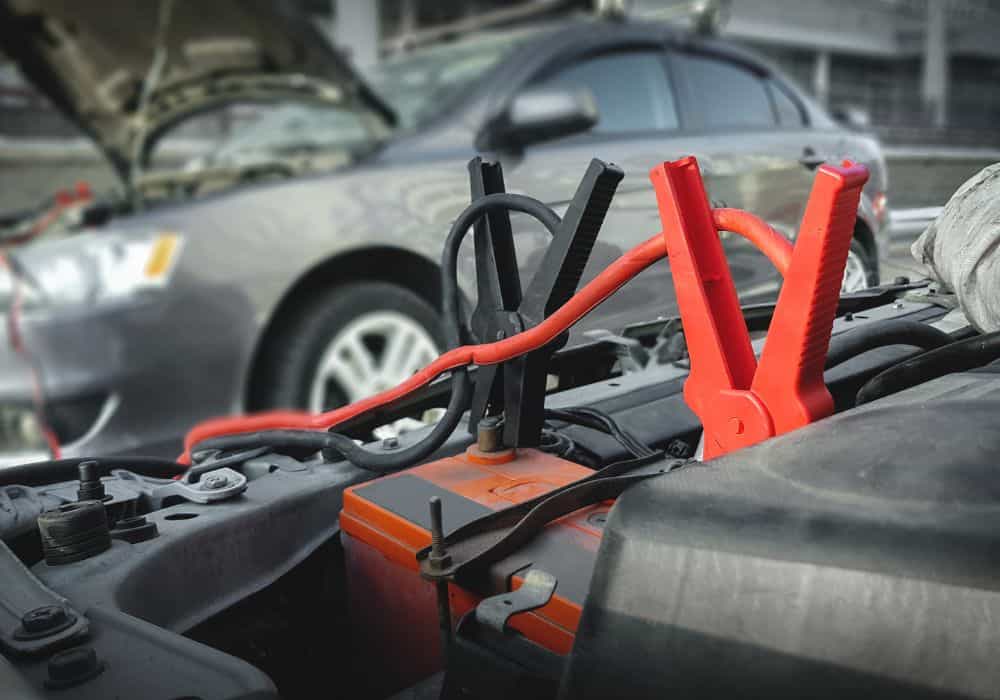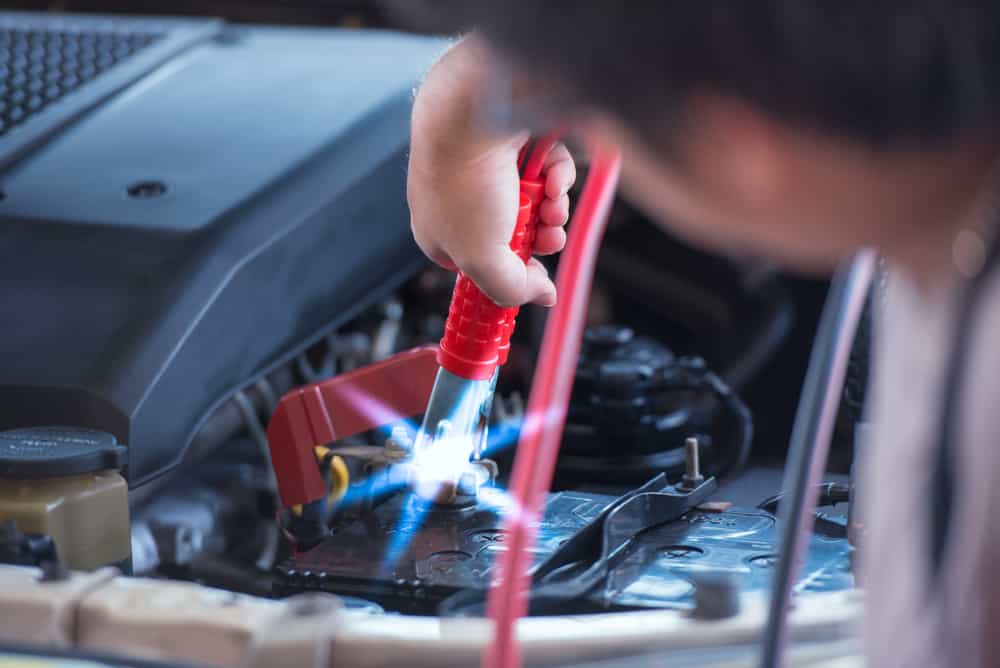The battery is one of the essential parts of our car. So long as it runs smoothly, we often forget it’s even there.
But sometimes, when our car hits a bump in the road and begins to fail us, we take a quick peak under the hood to see just how well our battery is fairing.
When our battery fails, our entire car suffers. No doubt you’ll want to replace it asap, as your vehicle will not start without it, and any electronic devices connected will begin to fail. Although replacing and repairing it is pretty straightforward, the presence of a little spark can alarm many people.
Does a spark mean there’s an electrical fault at play? Is there a risk of fire? Does my new battery need replacing afterward? And ultimately, is my car safe to drive?
In this article, we’ll investigate everything you need to know about a car battery sparking when you connect it. We will demystify why it happens, how to connect your battery safely, and what signs you should be aware of that point to bigger problems like a dead battery.
Table of Contents
Is a car battery spark normal?

One of the first things you need to know about a car battery sparking is that it is a perfectly normal, often unavoidable thing to happen.
This is because when your car battery dies, that doesn’t stop your electronics, lights, dashboard, and gadgets from demanding power. As soon as you connect a charged battery, a sudden jolt of electricity travels from the battery into your system, causing a smaller spark to appear.
As you connect, a spark will arc between the battery terminals and the battery cables. It will only occur after securing the second cable, which creates a “return” path for the electricity to travel back through. This energy escape can also cause a sizzling sound.
Are big sparks dangerous?

Although tiny sparks are considered normal when connecting back up a battery, what if the sparks are enormous? Is this a cause for concern? And what should you do if sparks continue to appear, even after you’ve installed the battery?
There are two considerations for this issue. Firstly, the size of the spark can be directly related to the number of electronics, devices, and accessories currently draining your battery. If your car has lots of lights, radios, alarms, and whatnot – the need for power will be much bigger, and a bigger spark may occur.
Generally speaking, though, a large spark is a cause for concern and deserves your attention. These sparks might melt metal terminals within the battery, causing massive structural damage. Additionally, the source of the spark may be a short circuit within your car’s electrics, which may take considerable time to investigate and solve.
Finally, sparks should never happen outside of reconnecting your battery. If the battery continues to spark afterward, you must disconnect it immediately. Now it’s time to diagnose the problem at hand. Some common culprits include:
- The new battery is damaged, drained, or improperly connected.
- Terminals have become corroded or damaged and prevent successful current of power. They may also be too loose.
- There is dirt, debris, or moisture causing connection issues.
Prevent sparks – Connect your battery properly
To help minimize the occurrence of sparks, consider how you’re connecting your new battery. Sometimes, it’s the way we install the battery that actually causes the most damage.
This includes how you prepare your workspace, in which order you should connect terminals, and how to secure your new battery.
Below is a typical step-by-step on connecting your battery.
Equipment needed: Protective clothing and eyewear, wrench, multimeter, new battery.
Remove the old battery:
- Put on protective clothing, including gloves and eyewear, to shield yourself. Open up the hood of your car and locate where your battery is.
- Using a multimeter, check the current voltage of your car battery. A voltage of under 12.6 volts, or a sporadic reading, indicates you need to replace the battery.
- Turn off the car ignition. Find where both the positive terminals and negative terminals are. The positive will often have a red cover and a + sign. The negative will be more petite and black.
- Disconnect the cables from the negative terminals first. Then disconnect the positive terminal.
- Avoid the battery cables and metal objects touching one another. Inspect cables for signs of damage, wear-and-tear or fraying. Replace them accordingly.
- Inspect fixtures and fittings for any corrosion, and wipe/clean accordingly.
- Using a wrench, loosen the clamps that secure the battery in place and remove it carefully.
Connecting the new battery
- Ensure the ignition is still off and you are wearing protective clothing. Place the new battery into position, ensuring cables do not touch metal surfaces.
- Do not connect cables simultaneously – this can create a big arc, resulting in big sparks. Instead, connect the positive cable first. Repeat for the negative wires.
- If you’re finding it hard to establish a connection between terminals, consider applying small amounts of grease.
- Tighten the nut or bolt to set it in place. This prevents your battery from being damaged by the vibrations found in your car. Avoid over-tightening, as this can fray cables and crack nearby fixtures.
- Turn the ignition back on and perform a diagnostic test with your multimeter. Again, tiny sparks are expected, especially if your previous battery was completely drained.
- Before closing your car hood for good, ensure the workspace is clean and free from dirt.
10 Expert Tips to remember

- The average lifespan of a car battery is three to four years. After this time, it may spark more often and cause power supply issues. Replace it as soon as possible with a brand new part.
- Batteries contain high voltage, so you must always handle them with care. Wear protective gear, including gloves and eyewear, tie up hair and avoid wearing jewelry when operating with the battery. Ensure there are no explosive gases nearby.
- Avoid using a screwdriver near the battery. The friction caused when in use can generate sparks and cause potential accidents. Instead, use a socket wrench.
- Inspect battery cables thoroughly from beginning to end – a frayed wire here could be causing your spark problem and lead to battery degradation over time.
- Reducing the number of devices connected to your car will reduce the pressure your battery is under. This can help prevent sparks from forming when installing a new battery.
- A sure sign you’ve connected your battery the wrong way is large sparks flashing on repeat when you turn your ignition back on. Disconnect your battery and examine that all connections are secured.
- Corrosion on battery terminals can cause additional sparks to happen. Clean with a wire brush, and wipe away debris or dirt with a cloth.
- Often people forget that car doors, windows, and sunroofs can also draw power from the battery. Ensure that you close all of these before disconnecting and reconnecting the battery, as they can also increase the occurrence and strength of sparks.
- Clean the area surrounding your battery – dirt, debris, or moisture can add to corrosion and lead to an electric spark.
- If your car’s design differs from our explanations or has excessive modifications to its battery compartment, refer to the manufacturer’s instructions for precise directions.
Conclusion
Your battery is the powerhouse behind everything your car can do. And even though we don’t see it that often, you’ll want to invest in the best battery to keep things for as long as possible.
But eventually, at some point, you will need to repair, replace and reconnect a brand-new car battery. And although you might think the task is beyond you, it’s a straightforward process.
But many novice mechanics worry about one thing during reconnections – sparks. Immediately, you’ll suspect there’s something more sinister at play. But as our article explains, tiny sparks from a battery are perfectly normal.
The only cause for genuine concern is if sparks are more extensive, accompanied by smoke. Only then should you take a closer look at what’s going on under your car’s hood. But by following proper battery care and connecting it properly, you should avoid all costly repairs.
If you have any questions about suspicious sparks coming from your battery connections, please leave a comment below.
Remember:
- Tiny sparks are perfectly normal during connection and shouldn’t be a significant cause of concern.
- Limit sparks flying by turning off and removing all unnecessary accessories and devices.
- Attach the positive terminals of a battery first, before the negative, to avoid causing a short in your circuit.
- The average life expectancy of a car battery is three to four years. Afterward, you should consider a total replacement.
